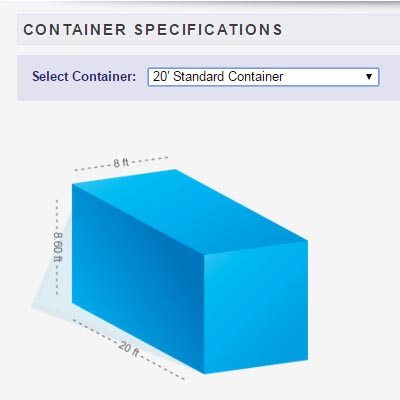Scarbrough’s Guide for New Weight Regulations
Scarbrough’s Guide for New Weight Regulations
A Resource for Shippers
Scarbrough has been reporting on the Safety of Life at Sea Convention (SOLAS) amendment for weight verification (verified gross mass - VGM) since 2013 and the implementation date is right around the corner. The Asian Shippers’ Council “doomed this to fail” back in 2013, but here we are almost 3 years later with new rules and regulations.
The Implementation Date:
July 1, 2016
The Mandate:
The International Maritime Organzation (IMO), the World Shipping Council, will require verification of container weights at origin.
The reason for the Mandate:
Simply stated, to improve safety.
[Source]It is estimated that as many as 20% of containers are overweight or misdeclared.
Deliberate misrepresentation or plain ignorance of the container weight can lead to some serious disasters on the ocean vessels, terminals, and railroads, not to mention disorder to our domestic roadways. An overweight container can easily damage another shipper’s container, hurt the vessel and even the environment.
Who is Responsible:
The shipper name listed on the bill of lading, i.e. the shipper of the product.
The Carrier’s Responsibility:
“A carrier may rely on a shipper’s signed weight verification to be accurate. The carrier does not need to be a “verifier” of the shipper’s weight verification. Nor do the SOLAS amendments require a carrier to verify that a shipper providing a verified weight according to Method 2 has used a method which has been certified and approved by the competent authority of the jurisdiction in which the packing and sealing of the container was completed. However, it is important to note that, for the shipper’s weight verification to be compliant with the SOLAS requirement, it must be “signed”, meaning a specific person representing the shipper is named and identified as having verified the accuracy of the weight calculation on behalf of the shipper.” [World Shipping Council]
What is the deadline to supply the VGM:
This is still to be determined on an international level. Deadlines will differ according to a number of factors; shippers should obtain information on documentary cut-off times from their carriers in advance of shipment.
What happens VGM is not supplied or deliberately misrepresented:
Fines, penalties, and even imprisonment in some countries.
How to verify Weight:
Two methods.
Method 1: weighing the packed container using certified and calibrated equipment, or
Method 2: using a calculated weight method for the sum of the individual components & packing materials inside the container plus the tare weight of the container.
An estimation of weight is not allowed.
Click the image to view Journal of Commerce’s
full infographic and weighing reference guide.
How to communicate VGM:
There is no particular form mandated to communicate VGM, however, one person must submit information and sign on behalf of the shipper, and this can be done electronically. To read more, click here.
How much is the Tare Weight for my Container:
View Scarbrough’s Shipping Tools and Container Specifications Guide
Click here
Estimated tare weight before cargo added:
20′ standard = 5140 lbs | 2331 kg
20′ reefer = 6481 lbs | 2940 kg
40′ standard = 8400 lbs | 3810 kg
40′ reefer = 11,905 lbs | 5400 kg
40′ HQ = 8576 lbs | 3890 kg
U.S. container Legal Weight:
The maximum cargo weight that can be safely and legally loaded for most US locations:
- 20′ container – 36,000 lbs and up to 44,000 lbs with the use of a triaxle chassis
- 40’/40’HQ container – up to 44,000 lbs (no triaxle chassis available for these container sizes)
Shippers must be aware that when factoring in the truck, chassis and container weight, the maximum gross vehicle weight cannot exceed 80,000 lbs (36,287kg), which is the basic legal limit for US highway transport. Even though some states allow higher weight limits, we recommend that the cargo weight is limited to the above stated maximums. Shippers must spread the weight evenly throughout the container or the container can be subject to an axle weight violation
Sources:
Guides:
World Shipping Council SOLAS VGM Guide and FAQ



